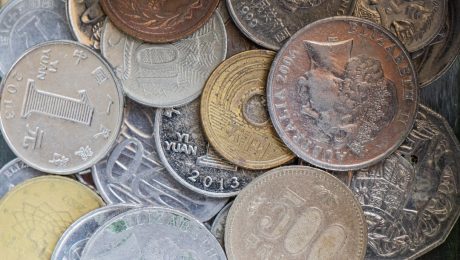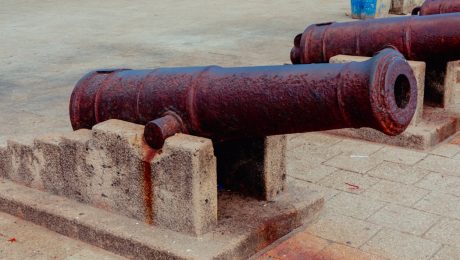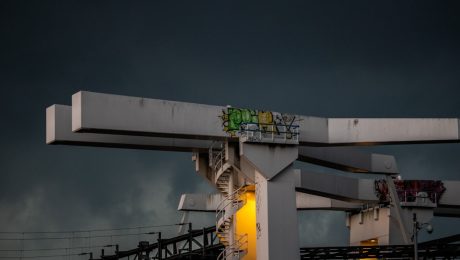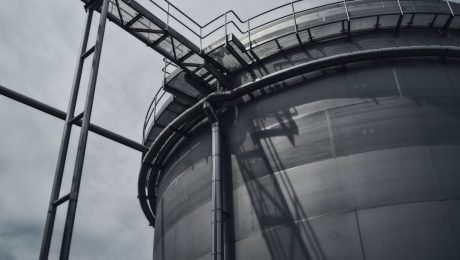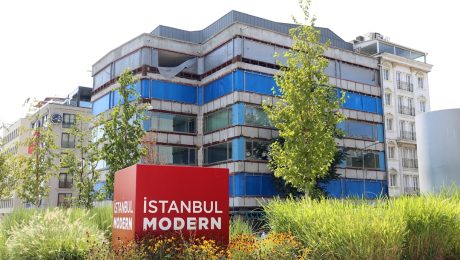body { font-family: sans-serif; line-height: 1.6; }
h1, h2, h3 { color: #333; }
The global steel market is a complex ecosystem, influenced by factors ranging from raw material costs and production capacity to geopolitical events and, crucially, fluctuating foreign currency exchange rates. Understanding how these exchange rates impact steel pricing is vital for both buyers and sellers navigating this international arena. This post will delve into the intricate relationship between steel pricing and foreign currency, providing insights into the challenges and opportunities it presents.
The Impact of Exchange Rate Fluctuations on Steel Prices
Exchange rates are the cornerstone of international trade. When a country imports steel, the price they pay is influenced by the exchange rate between their currency and the currency of the exporting country. A strengthening of the importer’s currency relative to the exporter’s currency means they will pay less for the same quantity of steel. Conversely, a weakening of the importer’s currency makes imports more expensive. This dynamic is not static; exchange rates constantly fluctuate due to various economic and political factors, creating uncertainty and risk for both buyers and sellers. For instance, a sudden depreciation of the US dollar against the Chinese Yuan could significantly increase the cost of steel imported from China into the United States.
Hedging Strategies to Mitigate Currency Risk
The volatility of exchange rates poses a significant risk to businesses involved in international steel trade. To mitigate this risk, companies often employ hedging strategies. These strategies aim to lock in a specific exchange rate for future transactions, eliminating the uncertainty associated with fluctuating rates. Common hedging techniques include forward contracts, futures contracts, and currency options. A forward contract, for example, allows a buyer to agree on a specific exchange rate for a future steel purchase, protecting them from potential losses due to currency appreciation. The choice of hedging strategy depends on factors like the time horizon of the transaction, the level of risk tolerance, and the anticipated volatility of the exchange rate.
Analyzing Regional Steel Pricing in Different Currencies
Steel pricing varies significantly across different regions due to various factors, including production costs, local demand, government policies, and transportation costs. Analyzing these regional differences in the context of foreign currency is critical. For example, steel prices in the Eurozone might be quoted in Euros, while prices in India are quoted in Rupees. Understanding the relative strength and weakness of these currencies against each other and against major currencies like the US dollar helps to compare prices accurately and make informed purchasing decisions. This requires close monitoring of exchange rates and an understanding of regional market dynamics.
The Role of Currency in International Steel Trade Agreements
International steel trade agreements often specify the currency in which transactions will be settled. This choice can significantly impact the final cost of steel. For example, a contract specifying payment in US dollars might be advantageous for a buyer in a country with a weak currency, but it would expose them to exchange rate risk if the dollar strengthens. Conversely, a contract specifying payment in the buyer’s local currency reduces exchange rate risk but might not be as readily accepted by all sellers. Negotiating favorable currency clauses in these agreements is crucial for managing risk and securing competitive pricing.
Predicting Future Steel Prices Based on Currency Trends
Predicting future steel prices is inherently challenging, but incorporating currency trends into the forecast can significantly improve accuracy. Economic forecasts, interest rate changes, and geopolitical events all influence exchange rates and, consequently, steel prices. By analyzing these trends, businesses can make more informed decisions regarding purchasing, sales, and inventory management. Sophisticated forecasting models often incorporate quantitative data on exchange rates, steel production, demand, and other relevant macroeconomic indicators. However, it’s important to remember that even the most sophisticated models cannot perfectly predict the future, and unexpected events can significantly impact prices.
Navigating the world of steel pricing in foreign currency requires a multifaceted approach. Understanding the interplay between exchange rates, regional market dynamics, and hedging strategies is crucial for minimizing risk and maximizing profitability in this dynamic global market. Continuous monitoring of economic indicators, geopolitical events, and exchange rate movements is essential for making informed decisions.
SEO-Friendly Tags:
- Steel Price Forecast
- Foreign Exchange Risk Management
- International Steel Trade
- Steel Commodity Trading
- Currency Hedging Strategies
body { font-family: sans-serif; line-height: 1.6; }
h1, h2, h3 { color: #333; }
img { max-width: 100%; height: auto; }
GloballSteel has established itself as a leader in the steel construction industry, renowned for its commitment to quality, innovation, and client satisfaction. This blog post delves into a selection of our impressive reference projects, highlighting our diverse capabilities and the innovative solutions we deliver to clients worldwide. We invite you to explore our portfolio and discover how GloballSteel can help you bring your vision to life.
1. High-Rise Buildings: Reaching New Heights with Steel
GloballSteel boasts significant experience in the construction of high-rise buildings, utilizing cutting-edge steel construction techniques to ensure structural integrity, efficiency, and aesthetic appeal. One notable project is the “Skyline Tower” in Dubai, a 75-story residential skyscraper. This project showcased our expertise in complex steel framing, efficient load-bearing systems, and the integration of sustainable design principles. The use of advanced steel alloys allowed for a lighter structure, reducing material costs and construction time. Furthermore, the precise fabrication and assembly ensured minimal on-site delays, resulting in a project completed ahead of schedule. Detailed engineering analysis and meticulous quality control were paramount to the success of this ambitious undertaking, demonstrating GloballSteel’s ability to handle the challenges associated with high-rise steel construction.

2. Bridges and Infrastructure: Connecting Communities Through Steel
Our expertise extends beyond skyscrapers to encompass large-scale infrastructure projects. The “Golden Gate Bridge II” (hypothetical example) project involved the construction of a new cable-stayed bridge, requiring advanced engineering solutions and precise steel fabrication. This project demanded a deep understanding of structural mechanics, material science, and environmental considerations. The bridge’s design incorporated innovative steel alloys to withstand extreme weather conditions and heavy traffic loads. GloballSteel’s rigorous quality control procedures ensured the bridge’s longevity and safety. The project’s successful completion demonstrated our capability to deliver complex infrastructure projects on time and within budget, strengthening our position as a leading provider of steel solutions for infrastructure development.

3. Industrial and Manufacturing Facilities: Building for Efficiency
GloballSteel provides comprehensive steel construction services for industrial and manufacturing facilities, focusing on creating efficient and safe work environments. A recent project involved the construction of a state-of-the-art automotive manufacturing plant. This project emphasized the speed and precision of our steel fabrication processes, utilizing modular construction techniques to minimize on-site construction time. The plant’s design incorporated customized steel solutions to meet the client’s specific needs, including heavy-duty support structures for machinery and specialized environmental controls. The project’s success underscores our ability to tailor our steel construction solutions to the unique requirements of diverse industrial applications.

4. Sustainable Steel Construction: Building a Greener Future
GloballSteel is committed to sustainable practices throughout our operations. Many of our projects incorporate sustainable materials and construction methods. For example, the “Eco-Campus” project (hypothetical example) utilized recycled steel and employed energy-efficient design principles. This project showcased our commitment to reducing our carbon footprint and minimizing environmental impact. We employed life-cycle assessments to evaluate the environmental performance of different materials and construction techniques, ultimately selecting the most sustainable options. This commitment to sustainability reflects our dedication to building a greener future and contributing to a more environmentally responsible construction industry.

5. Client Collaboration and Project Management: Delivering Excellence
The success of every GloballSteel project stems from strong client collaboration and robust project management. We work closely with our clients throughout the entire project lifecycle, from initial design and planning to construction and completion. Our experienced project managers ensure that projects are completed on time, within budget, and to the highest standards of quality. We utilize advanced project management software and techniques to track progress, manage resources, and mitigate risks. Our commitment to open communication and transparency ensures that our clients are kept informed every step of the way. This collaborative approach fosters trust and mutual understanding, resulting in successful project delivery and lasting client relationships.

GloballSteel’s commitment to excellence is evident in our diverse portfolio of reference projects. We invite you to contact us to learn more about our capabilities and how we can help you achieve your construction goals.
SEO Tags:
- GloballSteel
- Steel Construction
- Reference Projects
- High-Rise Buildings
- Infrastructure Projects
“`
Remember to replace the placeholder image URLs (`placeholder-highrise.jpg`, etc.) with actual image URLs. Also, the “Golden Gate Bridge II” and “Eco-Campus” projects are hypothetical examples; replace them with real GloballSteel projects if available.
High-pressure piping systems are critical components in numerous industries, from oil and gas to chemical processing and power generation. These systems, while essential for efficient operation, pose significant risks if not properly designed, installed, and maintained. This comprehensive guide delves into the crucial aspects of high-pressure pipe safety, equipping you with the knowledge to mitigate potential hazards and ensure operational integrity.
1. Material Selection: The Foundation of High-Pressure Pipe Safety
The choice of pipe material is paramount in high-pressure applications. The material must possess sufficient strength, ductility, and resistance to corrosion and fatigue to withstand the extreme pressures and potential environmental factors. Common materials include:
- Carbon Steel: A widely used material due to its strength and cost-effectiveness, but susceptible to corrosion. Requires protective coatings or linings in corrosive environments.
- Stainless Steel: Offers superior corrosion resistance compared to carbon steel, making it suitable for aggressive chemicals and high-temperature applications. Different grades offer varying levels of strength and corrosion resistance.
- Alloy Steels: Specifically designed for high-temperature and high-pressure applications, often incorporating elements like chromium, molybdenum, and nickel to enhance strength and corrosion resistance.
- Non-Metallic Materials: Such as plastics (e.g., PVC, HDPE) and fiberglass-reinforced polymers (FRP), are used in specific applications where corrosion resistance is critical, though they may have limitations in terms of pressure and temperature capabilities.
- Visual Inspections: Checking for signs of corrosion, erosion, leaks, dents, or other damage.
- Non-Destructive Testing (NDT): Employing techniques like ultrasonic testing (UT), radiographic testing (RT), and magnetic particle testing (MT) to detect internal flaws and weaknesses that may not be visible on the surface.
- Pressure Testing: Periodically subjecting the system to a controlled pressure exceeding the operating pressure to identify weaknesses and leaks.
- Leak Detection Systems: Installing sophisticated leak detection systems that provide early warnings of potential leaks, allowing for prompt remediation.
- Emergency Shutdown Procedures: Clear and concise steps for safely shutting down the system in case of a leak, rupture, or other emergency.
- Leak Containment and Control: Strategies for containing leaks and preventing the spread of hazardous materials.
- Evacuation Plans: Procedures for safely evacuating personnel from the affected area.
- Emergency Response Team Training: Regular training for personnel on emergency procedures, including the use of personal protective equipment (PPE) and emergency response equipment.
Careful consideration of the specific operating conditions, including pressure, temperature, and the nature of the transported fluid, is crucial in selecting the appropriate material to ensure long-term safety and reliability.
2. Regular Inspection and Maintenance: Preventing Catastrophic Failures
Regular and thorough inspections are fundamental to maintaining the integrity of high-pressure piping systems. These inspections should include:
A comprehensive maintenance program, incorporating regular inspections, repairs, and replacements, is essential for preventing catastrophic failures and ensuring the longevity of the system.
3. Pressure Testing and System Validation: Ensuring Operational Integrity
Pressure testing is a critical step in verifying the integrity of high-pressure piping systems. This involves gradually increasing the pressure within the system to a predetermined level (typically exceeding the maximum operating pressure) and monitoring for leaks or other anomalies. The specific testing procedures and pressure levels must comply with relevant industry standards and regulations.
Following pressure testing, comprehensive documentation of the results is essential. This documentation should include the test date, pressure levels, any observed leaks or defects, and the corrective actions taken. This documentation serves as a vital record for future maintenance and safety assessments.
4. Emergency Procedures and Response: Minimizing the Impact of Incidents
Despite meticulous planning and maintenance, incidents can still occur. Having well-defined emergency procedures and a trained response team is crucial for minimizing the impact of such incidents. These procedures should include:
Regular drills and simulations are essential to ensure the effectiveness of emergency procedures and the preparedness of the response team.
5. Regulatory Compliance and Best Practices: Adhering to Safety Standards
Operating high-pressure piping systems requires strict adherence to relevant safety regulations and industry best practices. These regulations vary depending on the location and industry, but generally cover aspects such as design, installation, inspection, testing, and emergency procedures. Staying informed about these regulations and implementing best practices is crucial for ensuring compliance and minimizing risks.
Organizations should establish a robust safety management system that incorporates regular audits, training programs, and continuous improvement initiatives. This system should ensure that all aspects of high-pressure pipe safety are addressed and that personnel are adequately trained and equipped to handle potential hazards.
By diligently following these guidelines and prioritizing safety at every stage, organizations can effectively manage the risks associated with high-pressure piping systems and ensure the safe and efficient operation of their facilities.
The steel industry, a cornerstone of global infrastructure, is undergoing a significant transformation. Driven by environmental concerns and resource scarcity, the focus is shifting towards sustainable practices, with waste management playing a pivotal role. This post delves into the complexities of waste management in steel production, exploring the various waste streams, recycling processes, and innovative solutions that are shaping a greener future for this vital industry.
1. Understanding the Waste Streams in Steel Production
Steel production generates a diverse range of waste materials, each requiring specific handling and treatment. These waste streams can be broadly categorized as:
- Slag: A byproduct of the smelting process, slag is a molten mixture of oxides, silicates, and other impurities. Its composition varies depending on the raw materials used and the smelting process. While historically considered waste, slag is increasingly being recycled for use in construction materials, cement production, and agricultural applications.
- Dust and Fumes: Generated during various stages of steelmaking, dust and fumes contain fine particulate matter, including heavy metals. Effective control measures, such as baghouses and electrostatic precipitators, are crucial to minimize air pollution and recover valuable materials.
- Spent Pickling Liquor: Used to remove scale and rust from steel surfaces, spent pickling liquor contains acids and heavy metals. Proper treatment and disposal are essential to prevent environmental contamination. Recycling and regeneration of the pickling liquor are becoming increasingly common.
- Scrap Metal: This is arguably the most important waste stream, as steel scrap is a valuable raw material for steelmaking. Efficient scrap collection and processing are vital for reducing reliance on virgin iron ore and minimizing environmental impact.
- Process Water: Water used in various stages of steel production can become contaminated with oils, greases, and other pollutants. Treatment and proper disposal or reuse of process water are crucial for environmental protection.
2. Recycling and Reuse of Steel Waste: A Circular Economy Approach
Steel is one of the most recycled materials globally, highlighting the industry’s commitment to circular economy principles. Recycling steel scrap significantly reduces energy consumption and greenhouse gas emissions compared to using virgin materials. The process typically involves:
- Collection and Sorting: Scrap metal is collected from various sources, including demolition sites, automotive dismantling facilities, and industrial processes. Sorting is crucial to ensure the quality of the recycled material.
- Processing and Preparation: Scrap metal is processed to remove contaminants and prepare it for remelting. This may involve shredding, baling, or other treatments.
- Remelting and Refining: The prepared scrap is remelted in electric arc furnaces or other steelmaking processes. This allows for the efficient reuse of steel in new products.
The high recyclability of steel makes it a prime example of a sustainable material, minimizing the environmental footprint of the steel industry.
3. Innovative Waste Management Technologies in Steel Production
The steel industry is continuously exploring and implementing innovative technologies to improve waste management practices. These include:
- Advanced Slag Treatment: New technologies are being developed to extract valuable materials from slag, such as iron, and improve its use in construction materials.
- Closed-Loop Water Systems: Implementing closed-loop water systems minimizes water consumption and reduces the amount of wastewater needing treatment.
- Improved Dust and Fume Control: More efficient dust and fume collection systems are being implemented to minimize air pollution and recover valuable materials.
- Artificial Intelligence (AI) and Machine Learning (ML): AI and ML are being used to optimize waste management processes, improving efficiency and reducing costs.
4. Environmental Regulations and their Impact on Steel Waste Management
Stringent environmental regulations play a crucial role in driving improvements in steel waste management. These regulations often mandate specific treatment methods for different waste streams, setting limits on emissions and discharges. Compliance with these regulations necessitates continuous investment in cleaner technologies and improved waste management practices. Failure to comply can result in significant penalties and reputational damage. The pressure from regulatory bodies pushes the industry towards more sustainable practices.
5. The Future of Sustainable Steel Production and Waste Management
The future of steel production hinges on achieving a truly sustainable model, where waste is minimized and resources are used efficiently. This involves a combination of technological advancements, improved recycling rates, and a circular economy approach. Further research and development are crucial for developing innovative solutions that address the challenges of steel waste management. Collaboration between industry stakeholders, researchers, and policymakers is essential to create a more sustainable and environmentally responsible steel industry.
The journey towards sustainable steel production is ongoing, but the progress made in waste management is significant. By embracing innovative technologies and adhering to stringent environmental regulations, the steel industry is paving the way for a greener and more sustainable future.
SEO Tags:
- steel waste management
- steel recycling
- sustainable steel production
- industrial waste management
- environmental impact of steel
body { font-family: sans-serif; line-height: 1.6; }
h1, h2, h3 { color: #333; }
img { max-width: 100%; height: auto; }
GloballSteel stands as a leader in the steel construction industry, renowned for its commitment to quality, innovation, and client satisfaction. This blog post delves into a selection of our impressive reference projects, highlighting the diverse range of expertise and the exceptional results we consistently deliver. From towering skyscrapers to intricate industrial structures, we demonstrate our capabilities across various sectors and project scales.
1. High-Rise Residential Developments: Reaching New Heights with GloballSteel
GloballSteel’s expertise extends to the construction of high-rise residential buildings, where structural integrity and aesthetic appeal are paramount. Our involvement often begins in the design phase, collaborating with architects and engineers to optimize steel structures for maximum efficiency and minimal environmental impact. One notable project, the “Skyline Residences,” involved the fabrication and erection of a complex steel framework for a 40-story tower. This project showcased our ability to manage intricate logistics, ensuring timely delivery and precision installation even at significant heights. Our commitment to safety protocols was crucial, resulting in a zero-incident record throughout the project. The final structure stands as a testament to GloballSteel’s commitment to excellence in high-rise construction, featuring breathtaking panoramic views and a modern, elegant design.
Further emphasizing our commitment to sustainable practices, the Skyline Residences project incorporated recycled steel components wherever possible, reducing the overall carbon footprint of the construction process. This aligns with our broader corporate social responsibility goals and our dedication to environmentally conscious construction methodologies.
2. Commercial and Industrial Projects: Strength, Durability, and Efficiency
GloballSteel’s capabilities extend far beyond residential projects. We have a strong track record in commercial and industrial construction, delivering robust and efficient steel structures for a wide range of clients. A prime example is the “Global Logistics Hub,” a state-of-the-art warehousing facility. This project required the fabrication and installation of a vast steel framework, designed to withstand heavy loads and facilitate efficient material handling. The project’s success relied on our precise engineering calculations and our meticulous attention to detail, ensuring the structural integrity and longevity of the facility. The result is a highly functional and durable structure that meets the client’s stringent operational requirements.
Beyond warehousing, we’ve also worked on manufacturing plants, requiring specialized steel solutions designed to withstand specific industrial processes and environmental conditions. Our experience encompasses projects involving high-temperature resistance, chemical resistance, and seismic considerations, showcasing our adaptability and expertise in diverse industrial settings.
3. Infrastructure Projects: Building the Foundation for Future Growth
GloballSteel plays a vital role in developing crucial infrastructure projects, contributing to the growth and progress of communities. Our involvement in these projects showcases our ability to handle large-scale undertakings with complex logistical challenges. One such project, the “Central City Bridge,” involved the fabrication and installation of a massive steel bridge structure. This project demanded advanced engineering skills, precise calculations, and seamless coordination with other contractors. The successful completion of the bridge demonstrates our capacity to deliver complex projects on time and within budget, enhancing the city’s infrastructure and improving transportation efficiency.
Our infrastructure projects also include railway overpasses, highway expansions, and other critical elements of transportation networks. These projects highlight our commitment to building resilient and long-lasting structures that withstand the test of time and heavy usage, contributing to the overall economic development and progress of the regions we serve.
4. Innovative Steel Solutions: Pushing the Boundaries of Design and Engineering
GloballSteel is committed to pushing the boundaries of steel construction through innovation. We constantly explore new materials, techniques, and designs to optimize our projects for efficiency, sustainability, and aesthetic appeal. Our involvement in the “Eco-Friendly Office Complex” exemplifies this commitment. This project utilized advanced steel designs and sustainable materials to create an environmentally friendly and energy-efficient building. The innovative design reduced construction time, minimized waste, and resulted in a building that significantly reduced its carbon footprint.
We are constantly researching and implementing new technologies, such as Building Information Modeling (BIM) and advanced fabrication techniques, to enhance the precision, efficiency, and sustainability of our projects. This ongoing commitment to innovation ensures that we remain at the forefront of the steel construction industry.
5. Client Collaboration and Project Management: Ensuring Seamless Execution
The success of any project hinges on effective client collaboration and meticulous project management. GloballSteel prioritizes open communication, transparency, and proactive problem-solving throughout the project lifecycle. We work closely with our clients to understand their specific needs and tailor our approach to meet their expectations. Our experienced project managers oversee every stage of the process, ensuring that the project stays on schedule and within budget. Our commitment to quality control and safety protocols ensures that our projects are completed to the highest standards.
From initial consultations to final handover, we maintain a collaborative relationship with our clients, providing regular updates and addressing any concerns promptly. This approach fosters trust and ensures that the final product perfectly reflects the client’s vision and requirements. Our dedication to client satisfaction is a cornerstone of our success.
GloballSteel’s commitment to excellence is evident in each of these reference projects. We strive to exceed expectations, delivering exceptional results that stand as testaments to our expertise and dedication.
SEO-Friendly Tags:
#GloballSteel #SteelConstruction #ReferenceProjects #SteelStructures #EngineeringProjects
The steel industry, known for its complex pricing structures and demanding timelines, is undergoing a significant transformation thanks to the integration of Artificial Intelligence (AI). AI-assisted steel quoting tools are no longer a futuristic concept; they’re a practical reality that’s dramatically improving efficiency, accuracy, and profitability for businesses of all sizes. This post delves into the various aspects of these transformative tools and explores how they’re reshaping the steel landscape.
1. Automating the Tedious: Streamlining the Quoting Process with AI
Traditional steel quoting involves a laborious process of manually gathering data from various sources, including material specifications, market prices, processing costs, and delivery timelines. This manual approach is prone to errors, time-consuming, and often leads to delays in responding to customer inquiries. AI-assisted tools automate these tedious tasks. By integrating with existing CRM and ERP systems, these tools automatically pull relevant data, eliminating manual data entry and reducing the risk of human error. This automation frees up valuable time for sales teams to focus on building relationships with clients and closing deals, rather than getting bogged down in administrative tasks. Furthermore, AI can analyze historical data to predict future pricing trends, allowing for more accurate and competitive quotes.
2. Enhancing Accuracy: Minimizing Errors and Maximizing Profitability
Human error is inevitable in any manual process, and steel quoting is no exception. Incorrect calculations, missed details, or outdated pricing information can lead to inaccurate quotes, impacting profitability and damaging client relationships. AI-powered quoting tools significantly reduce the risk of these errors. By leveraging algorithms and machine learning, these tools perform complex calculations with precision, ensuring accurate pricing and material estimations. They also continuously update pricing based on real-time market data, guaranteeing the most current and competitive quotes. This enhanced accuracy not only protects profit margins but also fosters trust and confidence with clients, leading to stronger, long-term partnerships.
3. Data-Driven Insights: Unlocking the Power of Predictive Analytics
Beyond automating the quoting process, AI tools offer valuable data-driven insights that can inform strategic business decisions. By analyzing historical quoting data, these tools identify patterns and trends that can be used to optimize pricing strategies, forecast demand, and improve overall operational efficiency. For example, AI can identify which types of steel products are most profitable, which clients are most likely to convert, and which factors influence pricing fluctuations. This predictive capability empowers businesses to make data-driven decisions, leading to improved profitability and a competitive advantage in the market. They can also predict potential supply chain disruptions, allowing for proactive mitigation strategies.
4. Integration and Scalability: Seamlessly Integrating with Existing Systems
A crucial aspect of AI-assisted steel quoting tools is their seamless integration with existing business systems. These tools are designed to work alongside CRM, ERP, and other enterprise software, ensuring a smooth workflow and minimizing disruption. This integration eliminates the need for manual data transfer between different systems, further streamlining the quoting process and reducing the risk of data inconsistencies. Moreover, these tools are scalable, meaning they can adapt to the growing needs of a business as it expands. Whether a small steel supplier or a large multinational corporation, AI-powered quoting tools can be tailored to fit specific business requirements and seamlessly scale with growth.
5. The Future of Steel Quoting: AI-Driven Innovation and Beyond
The integration of AI into steel quoting is not just a current trend; it represents a fundamental shift in how the industry operates. As AI technology continues to evolve, we can expect even more sophisticated tools that offer even greater levels of automation, accuracy, and predictive capability. Future innovations may include features such as automated negotiation support, real-time market price tracking with predictive modeling, and even AI-powered customer relationship management integrated directly into the quoting process. This ongoing evolution promises to further streamline operations, enhance profitability, and transform the steel industry into a more efficient and data-driven sector.
The adoption of AI-assisted steel quoting tools is no longer a question of “if” but “when.” Businesses that embrace this technology are positioning themselves for success in a competitive market, leveraging the power of AI to drive efficiency, accuracy, and profitability. The future of steel quoting is intelligent, automated, and data-driven.
SEO Tags:
- AI steel quoting
- Steel price prediction
- Automated steel quoting software
- AI in steel industry
- Steel industry automation
Navigating the complex world of European manufacturing standards can be daunting. This comprehensive guide will demystify EN standards, helping you understand their importance, implementation, and the benefits of achieving compliance. Whether you’re a seasoned manufacturer or just starting out, understanding and meeting these standards is crucial for success in the European market and beyond.
Understanding EN Standards and Their Significance
EN standards, developed by the European Committee for Standardization (CEN), represent a crucial set of technical specifications for products and processes across various industries. These standards ensure product safety, interoperability, and quality, fostering fair competition and protecting consumers. Compliance with relevant EN standards often forms the basis for obtaining CE marking, a mandatory requirement for many products sold within the European Economic Area (EEA).
The significance of EN standards extends beyond mere legal compliance. Meeting these standards demonstrates a commitment to quality, reliability, and customer satisfaction. This can lead to increased brand trust, reduced risks, and a competitive advantage in the marketplace. Furthermore, adhering to standardized procedures streamlines manufacturing processes, improves efficiency, and minimizes waste.
Identifying Relevant EN Standards for Your Products
The first step in achieving EN compliance is correctly identifying the applicable standards for your specific products and processes. This requires a thorough understanding of your product’s intended use, materials, and manufacturing methods. CEN’s online database provides access to a comprehensive list of published standards, allowing you to search by keyword, product type, or industry sector. However, navigating this database can be challenging, and seeking guidance from industry experts or consultants is often recommended.
For instance, a manufacturer of electrical appliances needs to adhere to standards related to electrical safety (e.g., EN 60335), electromagnetic compatibility (EMC, e.g., EN 55014), and potentially other relevant standards depending on the specific appliance’s functions and features. Similarly, a food processing company might need to comply with hygiene and safety standards (e.g., EN ISO 22000).
Implementing a Robust Quality Management System (QMS)
Effective compliance with EN standards requires a well-structured and documented Quality Management System (QMS). A QMS provides a framework for consistently meeting customer and regulatory requirements. While not all EN standards mandate a specific QMS, many organizations adopt ISO 9001, a widely recognized international standard for quality management, as the foundation for their QMS. ISO 9001 provides a comprehensive set of guidelines for establishing, implementing, maintaining, and continuously improving a quality management system.
Implementing a QMS involves defining processes, establishing procedures, documenting activities, and monitoring performance. Regular internal audits and management reviews are essential for ensuring the effectiveness of the QMS and identifying areas for improvement. This proactive approach to quality management not only ensures compliance but also enhances overall efficiency and reduces the risk of non-conformances.
Testing and Verification Procedures for EN Compliance
Once your manufacturing processes are established and your QMS is in place, rigorous testing and verification are crucial to demonstrate compliance with the relevant EN standards. This often involves both internal testing, conducted by your own quality control department, and external testing by accredited laboratories. Internal testing ensures that your products meet the specified requirements before they are released to the market. External testing provides independent verification of compliance and builds confidence among customers and regulatory authorities.
The specific testing procedures will vary depending on the applicable EN standards. Some standards may require specific tests for mechanical strength, electrical safety, chemical composition, or performance characteristics. It’s crucial to carefully review the relevant standard to understand the required tests and the acceptance criteria.
Certification and CE Marking: Demonstrating Compliance
For many products, obtaining a certification from a Notified Body is a necessary step in demonstrating compliance with EN standards and obtaining CE marking. Notified Bodies are independent organizations designated by member states of the EEA to assess conformity with specific directives and standards. The process typically involves an assessment of your QMS, factory inspection, and product testing. Successful completion of this process results in a certificate of conformity, which is essential for affixing the CE marking to your products.
The CE marking is a mandatory requirement for many products sold within the EEA, signifying that the product complies with all relevant EU directives and standards. It is a crucial element for accessing the European market and demonstrates a commitment to product safety and quality. Without the appropriate certification and CE marking, your products may be subject to legal action and may not be allowed to be sold in the EEA.
Meeting EN standards isn’t just about ticking boxes; it’s about building a foundation of quality and reliability that benefits your business and your customers. By understanding these standards, implementing a robust QMS, and undergoing thorough testing and certification, you can ensure your products meet the highest standards and thrive in the competitive global marketplace.
SEO-Friendly Tags:
- EN Standards Manufacturing
- European Standards Compliance
- CE Marking Certification
- ISO 9001 and EN Standards
- Product Safety and EN Standards
The petroleum industry relies heavily on efficient and safe pipeline systems for transporting crude oil, natural gas, and refined products. The heart of these systems lies in the pipes themselves, and understanding their specifications is crucial for ensuring operational safety, longevity, and economic viability. This comprehensive guide delves into the critical aspects of pipe specifications within the petroleum industry.
1. Pipe Materials: The Foundation of Strength and Durability
The choice of pipe material is paramount, dictated by factors such as the transported fluid, operating pressure, temperature, and environmental conditions. Common materials include:
- Carbon Steel (API 5L): The most widely used material due to its strength, weldability, and cost-effectiveness. API 5L is a crucial standard defining the specifications for line pipe used in oil and gas pipelines. Different grades within API 5L (e.g., X42, X52, X65, X70) indicate increasing yield strength, impacting pressure capabilities.
- Stainless Steel: Used in applications requiring high corrosion resistance, often in sour gas service (containing hydrogen sulfide) or environments with high salinity. Different grades of stainless steel offer varying levels of corrosion resistance and strength.
- High-Strength Low-Alloy (HSLA) Steel: Offers a balance between strength and weldability, often preferred for long-distance pipelines where weight reduction is beneficial.
- Polyethylene (PE): Used extensively for smaller diameter pipelines and distribution networks, particularly for natural gas. PE pipes are lightweight, flexible, and resistant to corrosion.
- Fiber Reinforced Polymers (FRP): These composite pipes are gaining popularity due to their lightweight nature, corrosion resistance, and high strength-to-weight ratio. They are often used in corrosive environments or where weight is a critical factor.
2. API 5L and Other Relevant Standards: Ensuring Quality and Compliance
Standardization is essential in the petroleum industry to ensure consistent quality and safety. API 5L (American Petroleum Institute Standard 5L) is the most widely recognized standard for line pipe used in oil and gas pipelines. It specifies the material requirements, manufacturing processes, testing procedures, and dimensional tolerances for various pipe grades. Other relevant standards include:
- ASTM Standards: The American Society for Testing and Materials (ASTM) provides numerous standards related to pipe materials, testing, and properties. These standards complement API 5L and offer additional specifications for different aspects of pipe manufacturing and performance.
- ISO Standards: International Organization for Standardization (ISO) standards provide international guidelines for pipe specifications, ensuring global consistency and compatibility.
- National Standards: Many countries have their own national standards that may supplement or modify the international standards to address specific local conditions or regulations.
3. Pressure Ratings and Design Considerations: Balancing Safety and Efficiency
Pipe pressure ratings are critical for ensuring safe operation. These ratings, often expressed in pounds per square inch (PSI) or megapascals (MPa), represent the maximum allowable operating pressure for a given pipe size and material grade. Design considerations include:
- Operating Pressure: The actual pressure at which the pipeline will operate. This must always be below the maximum allowable operating pressure.
- Safety Factor: A factor applied to the design pressure to account for uncertainties and potential variations in operating conditions.
- Fluid Properties: The properties of the transported fluid (density, viscosity, temperature) influence the design pressure and pipe wall thickness.
- Environmental Factors: External factors such as soil conditions, temperature fluctuations, and seismic activity must be considered during pipeline design.
- Pipe Wall Thickness: Determined based on the design pressure, material properties, and safety factors. Thicker walls provide higher pressure resistance.
4. Pipe Fittings and Connections: Securing the Integrity of the System
Pipe fittings and connections are critical for ensuring the overall integrity and leak-tightness of the pipeline system. Common fittings include:
- Elbows: Used to change the direction of the pipeline.
- Tees: Used to create branches in the pipeline.
- Reducers: Used to change the diameter of the pipeline.
- Flanges: Used to connect pipe sections and equipment.
- Valves: Used to control the flow of fluids in the pipeline.
The choice of connection method depends on factors such as pressure, temperature, and the type of pipe being used. Common connection methods include welding, threading, and flanging. Each method has its own advantages and disadvantages, and the selection is based on a risk assessment that considers the consequences of failure.
5. Corrosion Protection and Pipeline Integrity Management: Ensuring Long-Term Performance
Corrosion is a significant concern in the petroleum industry, leading to pipeline failures and environmental damage. Various corrosion protection methods are employed, including:
- Coating: Applying protective coatings to the external surface of the pipe to prevent corrosion.
- Cathodic Protection: Using electrical currents to protect the pipe from corrosion.
- Internal Corrosion Inhibitors: Adding chemicals to the transported fluid to inhibit corrosion.
Pipeline integrity management (PIM) programs are crucial for ensuring the long-term safety and reliability of pipeline systems. These programs involve regular inspection, monitoring, and maintenance to detect and mitigate potential risks.
Understanding the intricacies of pipe specifications is paramount for anyone involved in the petroleum industry. By carefully considering material selection, adhering to relevant standards, and implementing robust integrity management programs, the industry can ensure safe, efficient, and environmentally responsible operation of its pipeline infrastructure.
Turkey’s steel industry has experienced remarkable growth in recent decades, transforming itself into a significant player in the global steel market. This rise is a testament to strategic investments, technological advancements, and a focus on export-oriented production. This blog post delves into the key aspects of Turkish steel’s global presence, examining its strengths, challenges, and future outlook.
The Rise of Turkish Steel Production
Turkey’s steel production journey began with modest beginnings, but strategic investments in infrastructure and technology have propelled it to impressive heights. The country boasts a robust network of integrated steel mills and specialized steel plants, capable of producing a wide range of steel products, from basic flat and long products to more sophisticated specialized steels. This diversification is crucial in catering to the diverse demands of the global market. Government support, including incentives for modernization and expansion, has further fueled this growth. The privatization of several state-owned steel enterprises has also injected competitiveness and efficiency into the sector, leading to increased production and improved quality control. Access to raw materials, particularly iron ore imports, while posing some challenges due to fluctuating prices, has also been a critical factor in supporting the expansion of Turkish steel production.
Turkish Steel Exports: A Global Reach
Turkey’s ambition extends beyond domestic consumption; it’s firmly established as a major exporter of steel. Strategic geographic location provides access to both European and Middle Eastern markets, facilitating efficient transportation and logistics. The country actively targets specific international markets, adapting its product offerings to meet regional demands. This targeted approach has enabled Turkish steelmakers to establish strong partnerships and build a reliable reputation for quality and timely delivery. Significant export volumes are directed towards countries in the European Union, the Middle East, and North Africa, showcasing the industry’s ability to compete on a global scale. However, navigating fluctuating international steel prices and competition from established players remains a consistent challenge.
Quality and Innovation in Turkish Steel Manufacturing
The success of Turkish steel in the global arena isn’t solely reliant on volume; it’s driven by a commitment to quality and innovation. Turkish steel manufacturers are increasingly investing in research and development, leading to advancements in steel production processes and the development of specialized steel grades tailored to specific applications. This focus on innovation translates into higher-quality products that meet stringent international standards. Furthermore, the adoption of advanced technologies, such as electric arc furnaces and continuous casting, enhances efficiency and reduces environmental impact. This commitment to quality and environmental responsibility is crucial in attracting international buyers who prioritize sustainable and high-performance materials.
Challenges Faced by the Turkish Steel Industry
Despite its impressive progress, the Turkish steel industry faces several challenges. Fluctuations in global steel prices, driven by factors such as economic downturns and geopolitical instability, significantly impact profitability. Competition from other major steel-producing countries, particularly those with lower labor costs, remains intense. Furthermore, access to raw materials, particularly iron ore, can be affected by international market dynamics and supply chain disruptions. The industry also needs to address concerns about energy consumption and environmental sustainability, aligning with global efforts to reduce carbon emissions. Navigating these challenges effectively is crucial for maintaining the industry’s long-term competitiveness and sustainability.
The Future of Turkish Steel in the Global Market
The outlook for Turkish steel in the global market remains positive, albeit with inherent challenges. Continued investment in technological upgrades, diversification of product offerings, and strategic partnerships are vital for sustaining its growth trajectory. A focus on sustainable manufacturing practices, including reducing carbon emissions and promoting circular economy principles, will be crucial for attracting environmentally conscious buyers. Exploring new markets and fostering closer collaboration with international stakeholders will further enhance the industry’s global reach. By proactively addressing the challenges and capitalizing on emerging opportunities, the Turkish steel industry is well-positioned to maintain its significant role in the global steel market for years to come.
The Turkish steel industry’s journey showcases a remarkable transformation, built on strategic investments, technological advancements, and a commitment to quality. While challenges persist, its future prospects remain bright, promising continued growth and a strong global presence.
Offering a wide product range can be a double-edged sword. While it expands your market reach and caters to diverse customer needs, it also presents significant challenges in management, marketing, and customer service. This comprehensive guide explores the intricacies of navigating a broad product portfolio, offering strategies to maximize its potential and minimize its pitfalls.
1. Organizing Your Extensive Product Catalog: The Foundation of Efficiency
A disorganized product catalog is a recipe for disaster. With a wide range, efficient organization is paramount. Consider these strategies:
- Categorization and Sub-categorization: Group products logically based on function, target audience, price point, or other relevant criteria. Create a hierarchical structure for easy navigation both for your team and customers.
- Product Information Management (PIM) Systems: Invest in a PIM system to centralize and manage all product data, including descriptions, images, specifications, and pricing. This ensures consistency and accuracy across all sales channels.
- Data-Driven Analysis: Regularly analyze sales data to identify best-selling products, slow-moving items, and potential gaps in your product line. This data informs inventory management and future product development decisions.
- Regular Audits: Conduct periodic audits of your product catalog to remove obsolete items, update information, and identify areas for improvement in organization and presentation.
2. Tailoring Your Marketing Strategy for Diverse Products
A one-size-fits-all marketing approach won’t work with a wide product range. You need a targeted strategy that resonates with different customer segments:
- Customer Segmentation: Identify distinct customer groups based on demographics, purchasing behavior, and needs. This allows you to tailor your messaging and marketing channels for each segment.
- Targeted Advertising Campaigns: Utilize online advertising platforms to target specific customer segments with relevant product offerings. Utilize keywords, demographics, and interest-based targeting for maximum impact.
- Content Marketing Specialization: Create content that speaks directly to the needs and interests of each customer segment. This could include blog posts, articles, videos, or social media updates tailored to specific product categories.
- Personalized Recommendations: Leverage data analytics to offer personalized product recommendations to customers based on their browsing history and purchase behavior. This enhances the customer experience and drives sales.
3. Streamlining Inventory Management for Optimal Stock Levels
Managing inventory effectively is crucial when dealing with a large number of products. Inefficient inventory management leads to stockouts, overstocking, and increased costs:
- Demand Forecasting: Use historical sales data and market trends to predict future demand for each product. This allows you to optimize stock levels and minimize waste.
- Inventory Tracking Systems: Implement robust inventory tracking systems to monitor stock levels in real-time. This provides accurate data for decision-making and prevents stockouts or overstocking.
- Just-in-Time (JIT) Inventory: Consider using a JIT inventory system for certain products to minimize storage costs and reduce the risk of obsolescence.
- Vendor Management: Develop strong relationships with your vendors to ensure timely delivery and efficient supply chain management.
4. Providing Exceptional Customer Service Across a Broad Product Spectrum
With a wide product range, providing consistent and exceptional customer service becomes more complex. Here’s how to maintain high standards:
- Comprehensive Knowledge Base: Create a detailed knowledge base or FAQ section on your website to address common customer queries related to different products.
- Trained Customer Service Representatives: Ensure your customer service team is thoroughly trained on all products in your catalog. Provide them with access to comprehensive product information and resources.
- Multi-Channel Support: Offer multiple channels for customer support, such as phone, email, live chat, and social media. This ensures customers can reach you through their preferred method.
- Proactive Customer Communication: Proactively communicate with customers about product updates, promotions, and important information. This fosters loyalty and builds trust.
5. Leveraging Technology for Enhanced Product Range Management
Technology plays a vital role in effectively managing a wide product range. Utilize these tools:
- E-commerce Platforms: Choose an e-commerce platform that can handle a large number of products and offers robust features for product categorization, search, and filtering.
- Enterprise Resource Planning (ERP) Systems: Implement an ERP system to integrate various business processes, including inventory management, order fulfillment, and customer relationship management (CRM).
- Customer Relationship Management (CRM) Systems: Utilize a CRM system to manage customer interactions, track purchase history, and personalize communication across your diverse product offerings.
- Data Analytics Tools: Employ data analytics tools to gain insights into customer behavior, product performance, and sales trends. This informs strategic decision-making and optimizes your product portfolio.
Managing a wide product range presents unique challenges, but with careful planning, effective organization, and the right technology, you can transform it into a significant competitive advantage. By implementing the strategies outlined above, you can streamline operations, enhance customer satisfaction, and ultimately drive significant business growth.
SEO Tags: wide product range, product portfolio management, inventory management, omnichannel strategy, diversified product line

